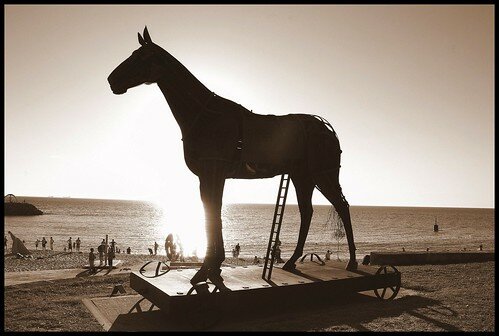Published at National Review Online:
Caprock Academy, an academically accelerated charter school in Grand Junction, Colo., has the generous policy of giving every student in literature classes new copies of every text studied. (In neighboring public schools, the books are typically loaned to students and must be returned unmarked.) The intent is that Caprock students, many of whom could not otherwise afford to buy the books, begin to build their own personal libraries of great literature and become lifelong readers. The policy also enables students to annotate the texts.
Many students cherish the books and take good care of them, but some do not. In the spring, on the last day of school, one can walk down the hall and find discarded texts on the floor by the lockers and crammed in the big trash cans at the end of the hallways. The books are tossed amongst the flotsam and jetsam students have emptied out of their lockers in preparation for summer break. Some have broken spines and torn pages. Other copies are almost in pristine condition. The high-school English teachers call these books “orphans,” and we rescue them from the trash. What is interesting, however, is which books get thrown out.
Caprock Academy offers a classical education, and students are given approximately six books a year in core literature classes. For example, freshmen read The Epic of Gilgamesh, Homer’s and Odyssey, Sophocles’ Three Theban Plays, Hesiod’s Theogony and Works and Days, and Aeschylus’ Oresteia. They also study Virgil’s Aeneid in Latin I.
Although the evidence is anecdotal and fluctuates a bit year to year, certain books appear in the trash with greater regularity than others. Emerson’s Essays and Poems, Hesiod’s Theogony andWorks and Days, Virgil’s Aeneid, Milton’s Paradise Lost, and Stowe’s Uncle Tom’s Cabin seem to get orphaned more than most — four to seven copies of each out of roughly 40 students per grade level. To be sure, Homer’s epic poems are thrown out as well, but not in the numbers one might expect. Many students like and keep their copies of The Iliad. This begets the questions how — and why — does Homer’s 3,000-year-old epic poem speak to Generation Z?
Continue reading here. And purchase Jonah: A Novel of Men and the Sea here.
******
Photo by Tama Leaver 


Comments